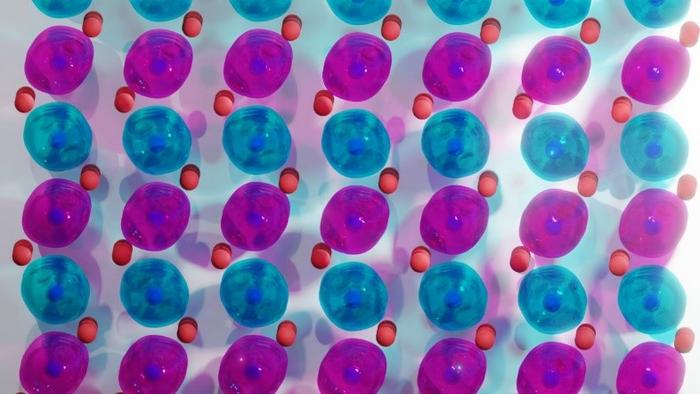Altermagnets represent a newly recognized class of materials in magnetism that could enable novel applications in spin-based electronics. Their magnetically ordered state consists of an antiparallel arrangement of microscopic magnetic moments, so-called spins, as in antiferromagnets. In contrast to antiferromagnetism, however, the altermagnetic state with zero net-magnetization enables the generation of electrical currents with spin polarization, as required in spin-based electronics. Thus, altermagnets combine the advantages of antiferromagnets, i.e., ultrafast dynamics, and ferromagnets, i.e., large spin polarization.

Credit: ill./©: Libor Šmejkal and Anna Birk Hellenes / JGU
Altermagnets represent a newly recognized class of materials in magnetism that could enable novel applications in spin-based electronics. Their magnetically ordered state consists of an antiparallel arrangement of microscopic magnetic moments, so-called spins, as in antiferromagnets. In contrast to antiferromagnetism, however, the altermagnetic state with zero net-magnetization enables the generation of electrical currents with spin polarization, as required in spin-based electronics. Thus, altermagnets combine the advantages of antiferromagnets, i.e., ultrafast dynamics, and ferromagnets, i.e., large spin polarization.
In collaboration with a theoretical team led by Professor Jairo Sinova and Dr. Libor Šmejkal, experimental physicist Dr. Sonka Reimers and her colleagues in Professor Mathias Kläui’s lab at the Institute of Physics at Johannes Gutenberg University Mainz (JGU) have demonstrated altermagnetic electronic band splitting associated with spin polarization in CrSb. “The magnitude of this spitting, observed in a good conductor and at room temperature, is extraordinary and promising with regard to electronic applications of altermagnetic materials”, said Professor Martin Jourdan, coordinator of the study recently published in Nature Communications.
Related links:
- https://www.klaeui-lab.physik.uni-mainz.de/ – Kläui Lab at the JGU Institute of Physics
- https://www.blogs.uni-mainz.de/fb08-iph-eng/ – Institute of Physics at Johannes Gutenberg University Mainz (JGU)
Read more:
- https://press.uni-mainz.de/scientists-directly-observed-altermagnetism/ – press release “Scientists directly observed altermagnetism” (19 Feb. 2024)
- https://press.uni-mainz.de/altermagnetism-experimentally-demonstrated/ – press release “Altermagnetism experimentally demonstrated” (15 Feb. 2024)
- https://press.uni-mainz.de/efficient-read-out-in-antiferromagnetic-spintronics/ – press release “Efficient read-out in antiferromagnetic spintronics” (25 Nov. 2021)
- https://press.uni-mainz.de/detecting-damage-in-non-magnetic-steel-with-the-help-of-magnetism/ – press release “Detecting damage in non-magnetic steel with the help of magnetism” (24 July 2018)
- https://press.uni-mainz.de/antiferromagnets-prove-their-potential-for-spin-based-information-technology/ – press release “Antiferromagnets prove their potential for spin-based information technology” (29 Jan. 2018)
Journal
Nature Communications
DOI
10.1038/s41467-024-46476-5
Article Title
Direct observation of altermagnetic band splitting in CrSb thin films
Article Publication Date
8-Mar-2024



